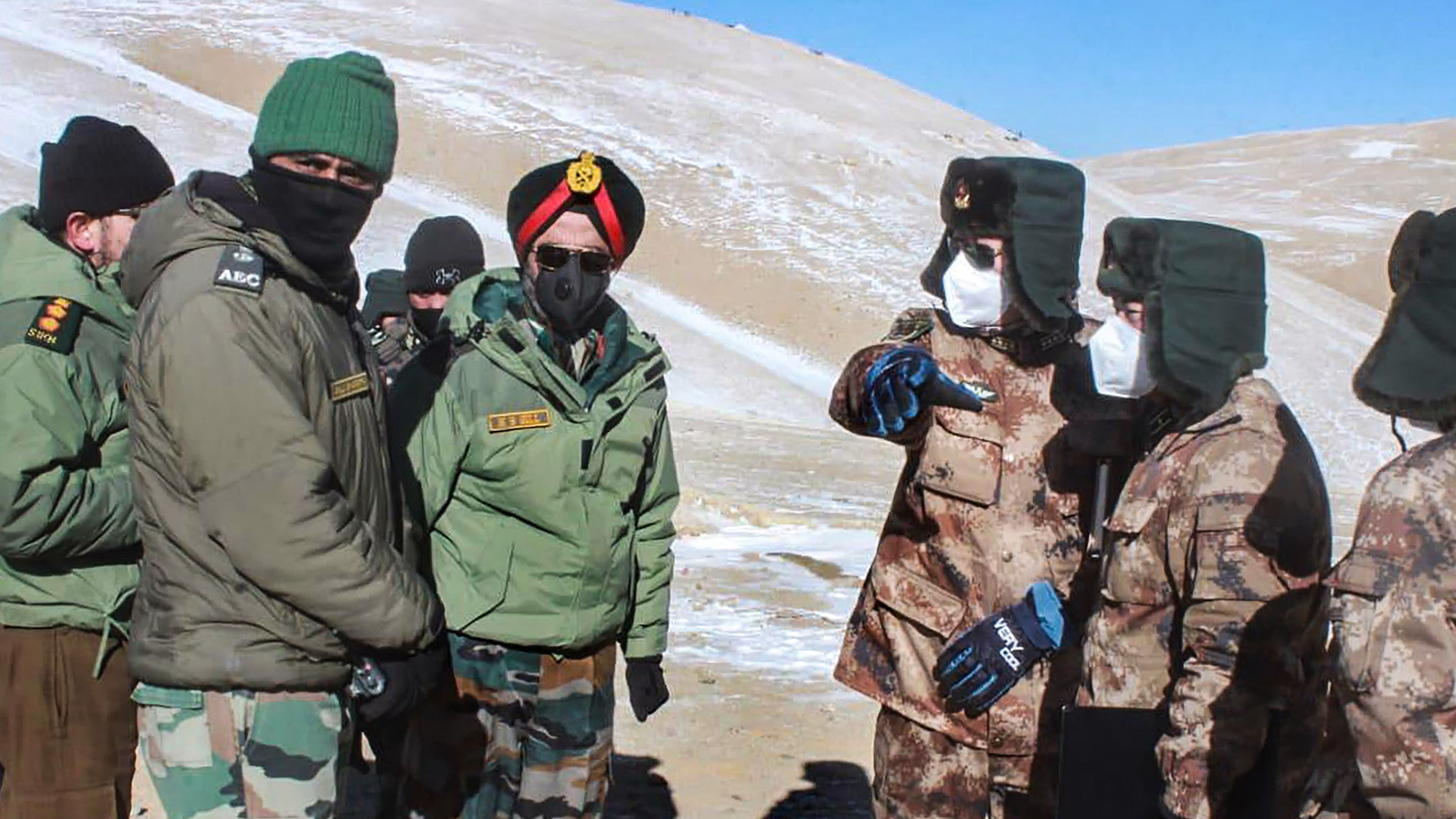
Representative Image.
Credit: PTI Photo
The military commanders of India and China on Monday held another round of negotiations to resolve the over three-and-a-half-year-long stand-off along the Line of Actual Control (LAC) in eastern Ladakh.
The negotiations come amid speculation over a meeting between the leaders of the two nations at Johannesburg in South Africa next week.
The 19th round of negotiations between the senior commanders of the Indian Army and the Chinese People’s Liberation Army (PLA) took place on India’s side of the Chushul-Moldo point along the Line of Actual Control with China. It started at 9:30 am and carried on for almost 10 hours. The two sides focused on the remaining face-off points – Depsang and Demchok – along the LAC.
The military commanders returned to the negotiating table after almost four months, with New Delhi and Beijing discussing the possibility of PM Narendra Modi and Chinese President Xi Jinping holding a bilateral meeting on the sidelines of the upcoming BRICS summit. The summit will be hosted by South African President Cyril Ramaphosa in Johannesburg from August 22 to 24.
Modi is also expecting to host Xi in New Delhi on September 9 and 10 – for the G20 summit that he will chair.
The relations between New Delhi and Beijing further nosedived ever since the stand-off between the Indian Army and the Chinese PLA along the LAC in eastern Ladakh started in April-May of 2020.
To avert the awkward spectacle of the Prime Minister hosting the Chinese President amid the continuing stand-off, New Delhi is keen on a meeting between the two leaders in Johannesburg and of late has had back-to-back high-level contact with Beijing.
External Affairs Minister S Jaishankar held a meeting with Wang Yi, the director of the Chinese Communist Party's Central Committee for Foreign Affairs, on the sidelines of an East Asia Summit conclave in Jakarta on July 14. The two sides followed it up with a meeting between Wang and National Security Advisor Ajit Doval on the sidelines of a BRICS meeting in Johannesburg on July 24.
Wang was, a day later, reappointed as the Foreign Minister of China, with Qin Gang, who had succeeded him on December 30, being removed.
Though protracted negotiations led to the mutual withdrawal of troops by both the Indian Army and the Chinese PLA from some of the face-off points along the LAC, like Galwan Valley, the stand-off could not be fully resolved and continues along the northern and southern banks of Pangong Tso, Gogra Post and Hot Springs.
The PLA troops deployed in Depsang, well inside the territory of India, are still continuing to block the Indian Army’s access to Patrolling Points 10, 11, 12, 12A and 13.
A face-off is also continuing in Demchok. Beijing has of late been claiming that the mutual withdrawal of troops by the Chinese PLA and the Indian Army from Patrolling Point 15 (Gogra-Hotsprings area) in September 2022 marked the restoration of normalcy along the LAC in eastern Ladakh.
China’s claim appears to be an attempt to subtly build up pressure on India to accept the “new normal” in Depsang and Demchok areas.
